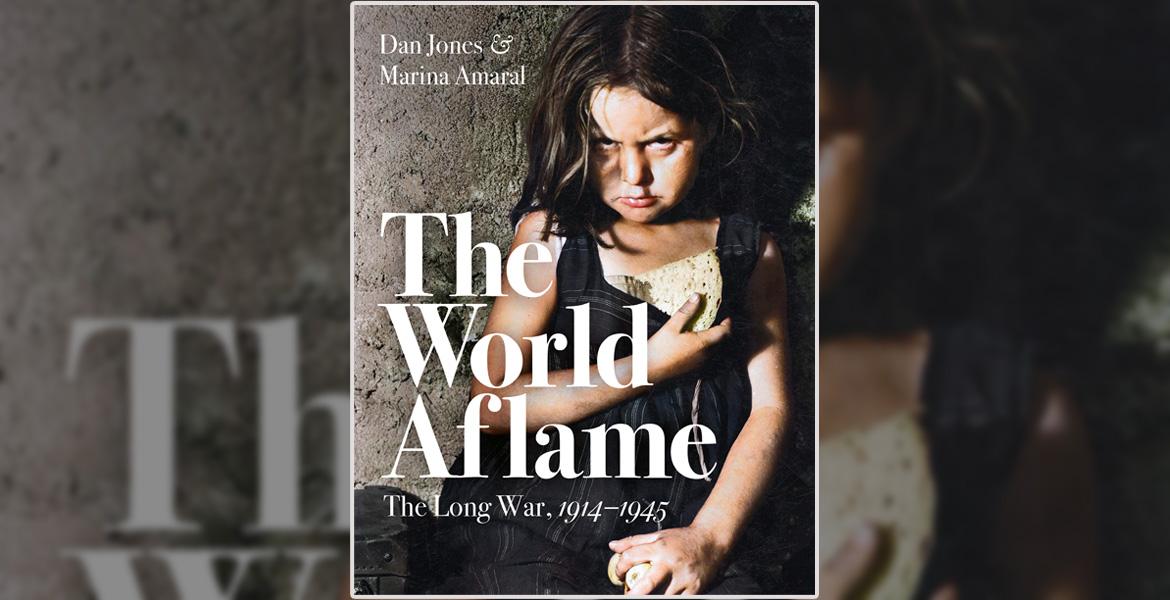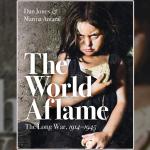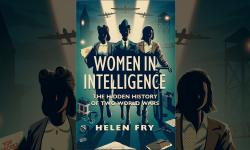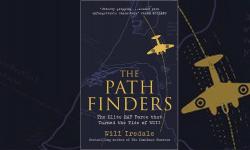The World Aflame, Dan Jones and Marina Amaral
The World Aflame is the eagerly anticipated follow-up to The Colour of Time, a worldwide bestseller that changed perceptions of the past through the careful colourization of black-and-white photographs. Marina Amaral’s pictures and Dan Jones’s text took the reader on a new journey through history, from the first photographs to the popularization of colour photography in the twentieth century. In doing so, they challenged the reader to look at the past in a different light, in technicolour, as something that was once alive and vibrant, and they challenged us to feel the highs and lows of this history in a way few had done before. The World Aflame asks the reader to undertake a similar, though more specific, journey. Instead of the whole gamut of human endeavour, it focuses on ‘the deadly but fascinating years from 1914 to 1945’ – not just the two world wars, but the localized conflicts and civil wars, the loss of life from disease and famine which conflict brought about, and the people, both significant and unknown, who lived and died through it all.
The integration of the text and the pictures is expertly done. The colourized photographs are striking, while the narrativeA story; in the writing of history it usually describes an approach that favours story over analysis. is weaved through descriptive and eloquent text. Yet the two combined are greater than the sum of their parts: the pictures are given context, and the text is brought to vivid life. Moments of high drama stand out from the page: the D-Day landing photograph is superb, communicating the threat, the action, the immediacy of Omaha Beach. Those of Operation Market Garden and Operation Tidal Wave, as well as the bomber’s eye view of the invasion of Poland, are equally jaw-dropping. Verbal and visual portraits provide poignancy, and range from the English and German troops swapping uniforms and cigarettes during the Christmas TruceAn agreement between enemies to stop fighting for a limited time., through the six kamikaze pilots joking and relaxing on the grass, to the unnamed inhabitants of the Warsaw GhettoPart of a town or city in which members of a minority group live, usually as a result of political, social, legal, environmental or economic pressure. Historically it has applied specifically to a Jewish area. looking confidently down the lens of the camera. This personification draws the reader in, in a way that is not possible with a normal book. It makes one wonder what happened to the subjects, before realising that one probably doesn’t want to know.
Somewhat obviously, this book is darker than its predecessorA person who held a job or office before the current holder., both figuratively and literally. The Colour of Time was about bringing history into full, vibrant, living colour. The World Aflame, in its use of colour, does almost the opposite. Some of the colourized photographs, covered as the subjects are by dust, mud, and grime, look almost as if the colour has been leached out of life. The infamous photo of Dresden is the most obvious example, but any number of others – from the trenchesLong, narrow ditches through to the ReichstagDuring the Weimar Republic, the Reichstag was a legislative body in Germany. After the Nazi takeover, it became purely a ceremonial assembly. fire – have a similar effect. The reason is that the book is emotionally driven. Many of the pictures – of famine, war, death – are visceral and upsetting, and all the more so for being in colour. Each picture and topic is picked with a clear intention: to show the shocking awfulness of the years 1914-45. The chapter covering the ‘Roaring Twenties’, for example, contains little to celebrate, with the only picture that captures what many believe to be the essence of that decade – that devil-may-care, happy-go-lucky attitude – is of F. Scott Fitzgerald and his family. Yet even this supposedly joyful Christmas photo is marred by a depressing explanation: the Fitzgeralds ‘drank heavily and recklessly; their marriage was plagued by fights, jealousies, serious mental and physical health issues, and acute financial woes.’ P. 164.
P. 164.
Some might question the place of emotion in history, and in general the cherry-picking of evidence to support a point is inexcusable. However, this is no ordinary history book, and nor does it pretend to be. As the introduction makes clear, a certain amount of artistic licence must be used in colourizing the pictures, and this extends to the use of language. The book has a particular point to prove, and that point is worth quoting in full: ‘Colourization at its best is an emotional enhancing agent: it magnifies empathy and horror, pity and disgust. It challenges us to respond to history not simply as accountants and analysts, but as human beings, capable of the same fear, confusion, passion, ambition, anger and love as those whose images we see. It asks us to ask more. It nudges us to go off and hunt for the truth behind those extraordinary scenes. That is its purpose. That is its power.’ P. 9.
P. 9.
It has often been said that a picture paints a thousand words, but The World Aflame does considerably more than that: each one of the pictures included within the volume – almost without fail – tells of a thousand lives, sacrificed on the terrible, flaming pyre of the first half of the twentieth century. Despite the beauty of the language, it is not an easy read. It is not cathartic, and it is not pleasant. But nor should it be. Too often debate about the First and Second World Wars has become sterilized. It is dates and battle lines and theories and politics. This book does not provide the usual careful and clinical analysis. Instead, it provides a narrative, a story that reminds us that all of these statistics relate to people, and that breaks down a few of those walls that have been constructed to protect us from reality as it is seen, heard, and felt in its full gut-wrenching agony. So read it, weep, hug your loved ones, and remember the lessons this book is trying to teach. And be prepared to lament the terrible losses suffered while the world was aflame.
- Log in to post comments







